Korean chocolate is a topic close to my heart, as I've been living in South Korea for the last three years, and watched the local market blossom. However, South Korea is rarely— if ever— associated with great chocolate.
It's not that Korean chocolate has a bad reputation, but rather that it doesn't have a reputation at all (unlike K-pop, Korean skincare, and cosmetic surgery). But just like South Korea's reputation for island getaways and quality coffee, that's all about to change.
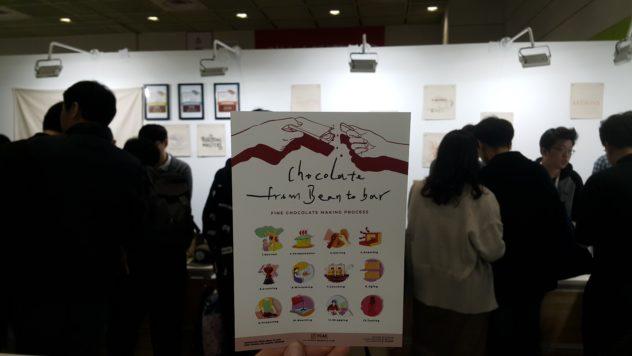
Jump to:
Korean Chocolate's Short History
In an interview in 2018, a local chocolate maker told me that the first significant entrance of chocolate into the Korean market was just after World War II. American soldiers brought little chocolates with them, to give out to local kids in order to lift their spirits.
Some of the photos of this have become pretty famous, and feature very occasionally in the press. This article gives a nice little overview of this history. Since the War, the American military has had a strong presence in South Korea and neighboring Japan; they played a supportive role in rebuilding the respective nations.
Then again after the Korean War, American military presence became even more palpable. Even in the wake of a devastating war which permanently divided their previously unified country, Koreans rather quickly started building up their own chocolate brands.
Among these is the Na Hana (나하나) brand from HaiTai, no longer available (though the company still makes chocolate), and the infamous Ghana Chocolate (가나 초콜릿), still sold in its original 1970's packaging.
The mass-market chocolates which have been popular for decades have maintained that popularity, in part thanks to Koreans' desire to keep the local economy growing at all costs (taste buds included).
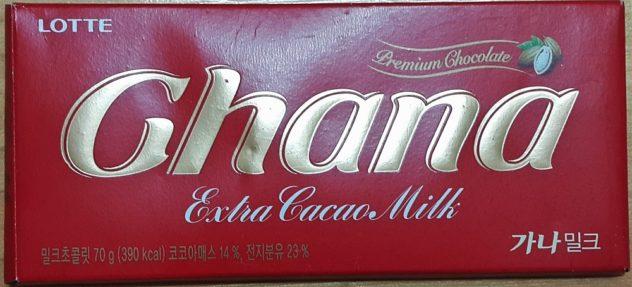
Talk to any Korean between the ages of 6 and 60, and I guarantee they'll name the same few chocolates as the ones they grew up eating: Ghana, ABC Chocolates, and Pepero. Until the 1980's, when the country's dictatorship effectively ended, South Korea imported very few packaged goods.
Combine that with the culturally-ingrained practice of supporting Korean businesses above all, and imported chocolates are still relatively uncommon. They're popular when you can get them, but they're not easy to get. These days, there are whole neighborhoods in Seoul which have become ubiquitous with foreigners and foreign foods, thanks to the American military bases.
Outside of mass market brands sold in grocery stores & convenience stores across the country, those international hubs are still the best places to find quality chocolate in Korea. Soldiers aren't giving it out for free anymore, but the more premium-positioned brands are still overwhelmingly imported.
Or at least they look like they are. If you speak Korean, note that in the ad below, the word "chocolate" is spelled 쵸코렡 rather than the now-common 초콜릿, revealing its foreignness even decades after it was introduced.
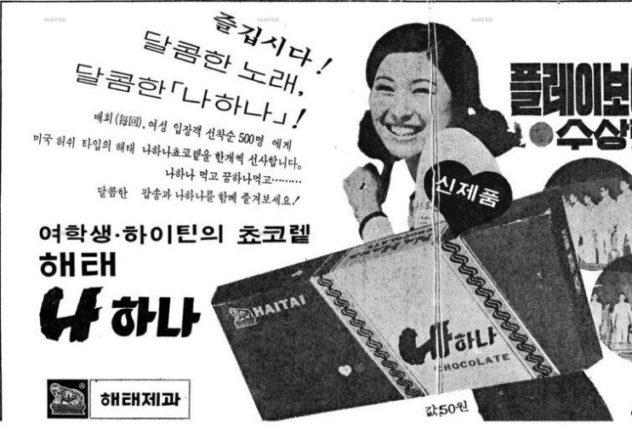
European Influence In Korea
As mentioned earlier, Korean society was very isolated for the few decades following the Korean War. This isolationist policy resulted in very quick economic growth and an incredibly large value placed upon school and work, further burdened by the strict social hierarchy.
So at the same time as domestic chocolate brands were starting to thrive, they brought with them a sense of ubiquity. Chocolate had never really shaken off its foreignness, so when imported chocolates began appearing, people really took to them.
Thanks to the continued American military presence, American brands like Hershey's and Mars have had the largest presence. But almost any imported chocolate was seen as exotic & exciting, and when European desserts and pastries began appearing in the Korean market, so did European chocolates.
The Swiss and Belgian reputation for quality chocolates has affected the Korean market, as well, with brands like Läderach and Teuscher, Leonidas and Godiva, leading the premium market. It's very similar to what happened in Japan.
Over the decades, chocolate has managed to carry that need to be imported in order to be of quality. While Korean pastry chefs and chocolatiers are slowly working to change that reputation, it's a slow march towards progress.
For one, both pastry chefs and chocolatiers are customarily sponsored by one specific specialty chocolate producer once they reach a high enough level of fame, similar to what happens in Hong Kong. So even the fancy chocolates made in Korea are still made using European couverture chocolate.
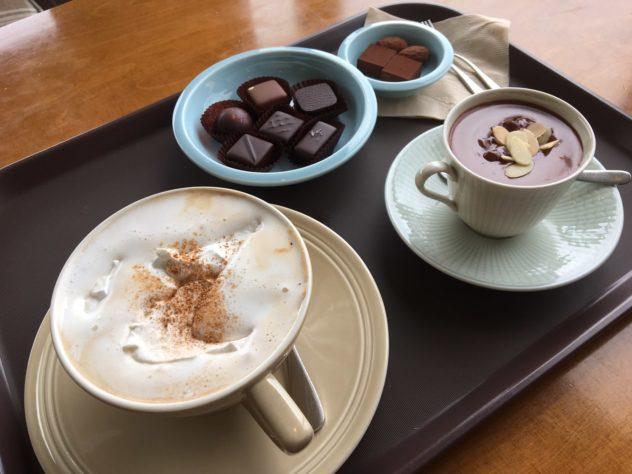
The Modern Korean Chocolate Market
At it's most basic, sweet versions of European desserts and chocolates are commercially preferred throughout the country. You can see them dominating in Korea's most famous bakery chains, Paris Baguette and Tous Les Jour.
Milk chocolate actually makes up the majority of chocolate available in Korea, based on my 3 years of visiting chocolatiers and convenience stores across the country. While the sweetness preference is not an issue, the quality of the cacao being used, and the lack of understanding as to what people are eating, is a problem.
Like in the US and most other western countries, the chocolate products in Korea have been more chocolate-flavored sugar than actual chocolate. This is especially notable in a country whose main form of interpersonal communication is via an app called "Kakao."
But on a smaller scale, the quality of the chocolate in the premium category is slowly increasing. Young people in particular are looking for beautiful and high-quality gifts to give for holidays and birthdays, and food is a common default.
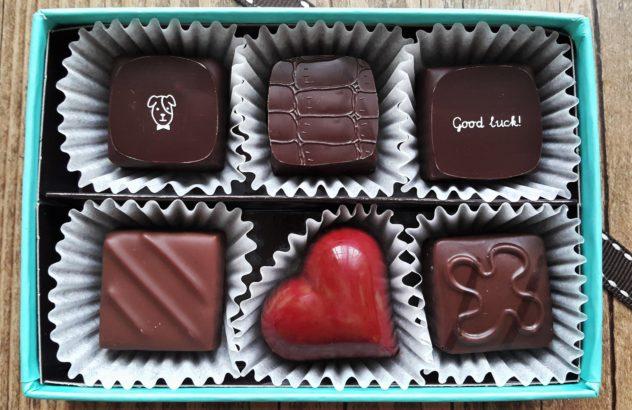
Most Korean chocolatiers are still using imported couverture chocolate, which is more expensive for domestic craft chocolate makers to produce on a small scale. European pastries like egg tarts, croissants, and macarons still reign supreme.
But many chocolatiers are now choosing to feature local ingredients and flavors, like red bean paste and yuzu. They're building off of a heavily European-influenced dessert base, as even the concept of eating sweets after a meal is imported.
Local desserts are few in number, and are either rice-based or seasonal fruits. Health is still a major factor in choosing what to eat— calories for any given product legally has to be written on the packaging (see above photos).
Such prioritizing has forced desserts to remain indulgent in Korean eyes, making it more of a special occasion food, like wine, rather than part of a daily ritual, like coffee. Yet the domestic dessert market is not insignificant to the future of Korean chocolate; growing its quality chocolate segment significantly is a real possibility. That is, if the educational aspect is carefully watched over, as it has been in Japan.
Chocolate Holidays In South Korea
Overall in Korea, chocolate is a popular and well-known food, but it's not part of most people's daily diet like it is in some Western countries. For the most part, chocolate is seen as a safe gift for friends, partners, coworkers, and the like.
How fancy the chocolate seems indicates to that person how much you respect them, much more so than the true quality of the chocolate. For this reason, Korea's bean to bar chocolate makers have incredibly nice packaging, often more intricate than the treats inside.
This is especially true on Korea's biggest chocolate holidays, when the overwhelming majority of Korean chocolate is bought. Those major holidays are generally "couple's holidays," on which one partner is expected to buy chocolate for the other.
Chocolate is still overwhelmingly marketed to women and to people buying gifts for women (see the 40-year-old ad above). Christmas (December 25th), Valentine's Day (February 14th), and White Day (the reverse of Valentine's Day, on March 14th), are the three major spikes in Korean chocolate sales.
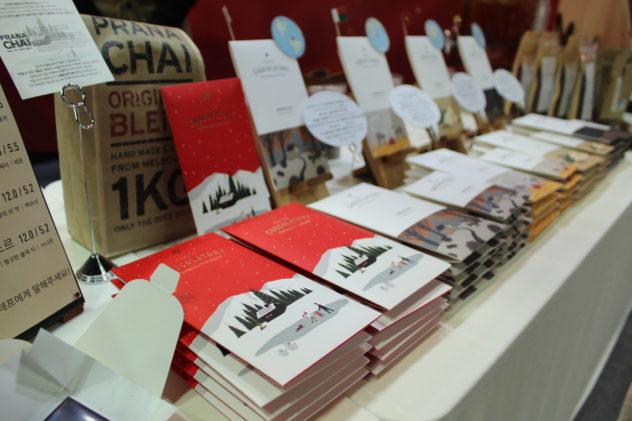
Similarly, the big Korean family-centric holidays of Chuseok (late September/early October) and Seollal (late January/early February) are famous for inspiring extravagant food gift sets, a tradition which Korean Chocolate makers are taking full advantage of.
In the past, a chocolate bar was shelf-stable but cheap, completely inappropriate for a show of respect & thoughtfulness. Bonbons, on the other hand, might have been appropriate, but had to be consumed quickly; health was a concern.
So with the emergence of craft chocolate, Korean chocolate makers could offer families beautiful, delicious, and long-lasting treats to present at large gatherings, with the added bonus of being healthy. Like in Japan, Korea's dessert palate as a whole is slowly becoming accustomed to less-sweet dishes.
They appreciate a range of flavors within the category of desserts, rather than just overwhelmingly saccharine goods.
The speed of consumer education in Korea is commencing at a snail's pace, but the interesting sector of market growth remains in the small bakeries and chocolateries selling high quality chocolates and chocolate cakes & pastries made using high quality imported chocolate. Change is coming.

Korean Chocolate Trends
Just like the honey butter trend several years back, and the more recent green tea infatuation, popularity for flavors in Korean foods comes in waves. We can still see vestiges of honey butter and green tea (thankfully not together) around the marketplace, but flavor trends tend to hit in tsunamis and then quickly die down here.
At the time of publication, Taiwan's tiger sugar milk tea is ridiculously trendy, with cafes seeing lines around the block on weekends. But the more pertinent market trends to look at are the food movements that have hit and stuck in the Korean market, and what we can learn from them.
Sticky food trends in Korea include French-style bakeries, independent coffee roasters, and macarons. While I realize that macarons are a French cookie, I don't think Koreans realize that and thus have taken it to a whole other extreme of flavors, sizes, and uses. Macarons are very much in vogue in South Korea.
That said, 2019 flavor trends have included yuzu, brown sugar caramel, and anything with cacao nibs in it. Chocolate is synonymous with indulgence— and weight gain— in Korea, so most all chocolate shops have an elegant feel to them.
The idea that chocolate could be something good for you or include any healthy element is still more or less a foreign concept (and not the trendy kind). Korean chocolate falls pretty neatly into two camps: sweet & cheap or expensive & indulgent. I've had lame versions of both, however, so watch out.
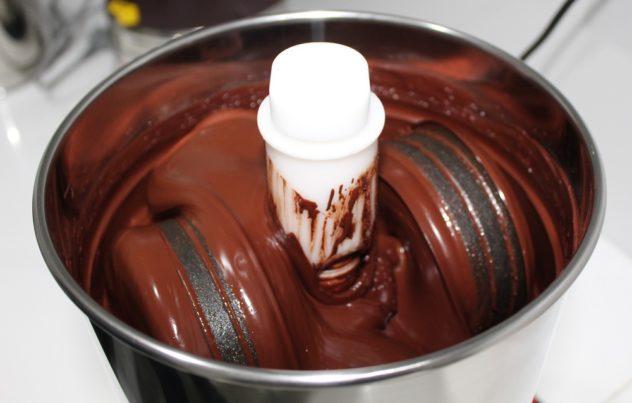
Bean To Bar Chocolate In Korea
Though the bean to bar chocolate being in Korea is quite good, from what I've noticed, it's just not easy to find. Plus it's expensive, unlike a cup of fine coffee or Korean wine (another tale for another day). The price, however, is not really as big of an issue as its physical inaccessibility.
In 2018, both of the country's online craft chocolate importers set up shop, one with a physical shop and the other with a cafe on the way. Both of these Seoul-area businesses are complements to the small but growing bean to bar chocolate makers in Korea.
But they're also indicators of the bigger fine chocolate wave gearing up to hit the country. Currently, the small amount of craft chocolate being made in and available in Korea is in a stage of rapid growth, gathering momentum and creating a market out of thin air.
As of the publication of this article, there are between 14 and 18 craft chocolate makers in Korea, all of varying sizes. Some of the more established makers include:
- CACAODADA (Seoul)
- Roasting Masters (Seoul)
- P. Chokko (Seoul)
- Chocodongi (Suwon)
- Public Chocolatory (Chuncheon)
- Hocada Coco (Hongcheon)
Korean craft chocolate is largely comprised of a single origin dark chocolate base, building off of it with a few making inclusion bars and milk or white chocolate. Most shops also sell coffee and some other goodies, like macarons or chocolate bark.
I can't think of a single Korean chocolate maker who's living purely off their single origin chocolate bars. Come to think of it, I can't really think of craft chocolate makers anywhere doing such a thing. But as the global craft chocolate movement continues to move forward, the face & perception of Korean chocolate will continue moving right along with it.
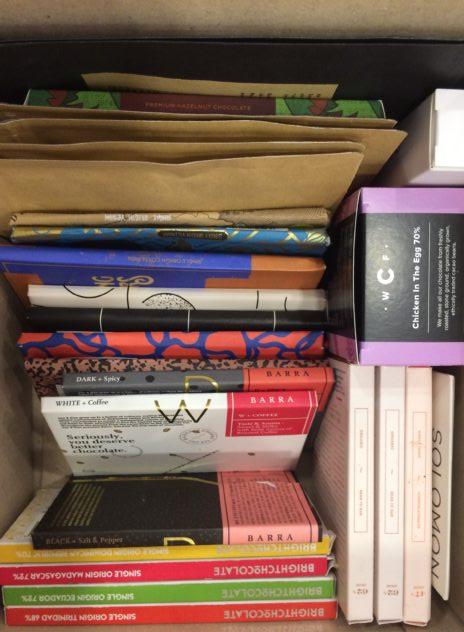
Is Korean Chocolate Good?
Weirdly, people seem to Google this a lot. So the short answer? It can be.
I don't think that craft chocolate is for everyone, just like I don't think fine wine and caviar are for everyone. Some people love boxed wine with fish & chips, and that's absolutely fine, as long as they know their options.
But most Koreans don't think of Korean chocolate as good because they don't know that it can be. All they know is Ghana Milk and Jenne bars (the modern version of Na Hana). If every Korean in the country were given a tiny bite of chocolate made by one of the Korean chocolate makers named above, I guarantee that half of them would spit it out.
Most of them would be amazed at how different it tastes from their memories of chocolate. But the most important this is that they have the choice. Just as most craft chocolate makers had a "come-to-melangeur" moment with great chocolate, so will most customers.
In the end, the chocolate bars that are widely available, found on supermarket and convenience stores shelves across the country, are not that great. Korean chocolates are overly sweet with a weird mechanical flavor— until you begin to check the chocolaty nooks & crannies of Seoul and explore the good stuff.
The Future of Korean Chocolate
The current Korean tendency towards fine foods and flavors will be a distinct advantage for those looking to sell in the Korean marketplace. While right now many craft chocolate makers are imitating the American chocolate movement, chocolatiers are imitating European techniques, and most consumers are still stuck on chocolate-flavored milk, the future is home grown.
Though Korea will never grow their own cacao, they do have other important ingredients and flavor traditions to offer to the world. In addition, the strong fine coffee market means that consumers are ready for fine-flavored foods.
After the bean-to-bar revolution hits scale in Korea, the inclusion bars I rant about being the future of craft chocolate will finally hit home. In 2025, I believe that Korea will have at least 50 chocolate makers, and much like parts of the US, they'll be scrambling to differentiate themselves.
Unlike Americans or Japanese, Koreans are very adept at online ordering everything you can imagine, and once they like a brand they stick to it. The main issue will be getting them to try it in the first place.
High quality, expensive food products are a line in many people's budgets, either for gifts or personal indulgence; that's why there are so many pastry shops in Seoul.
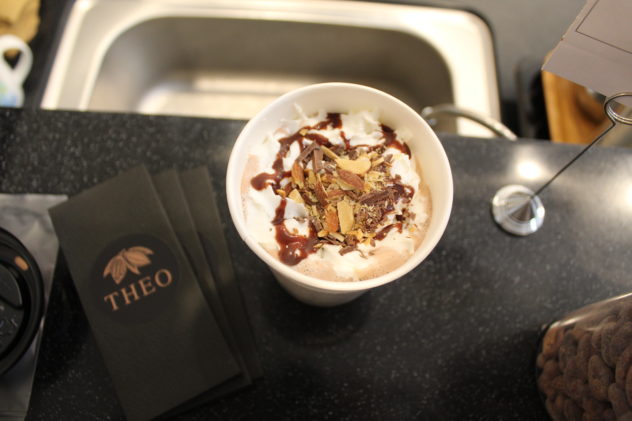
2016 was when many people discovered bean to bar chocolate. 2017 was the year of importing cacao and stabilizing the market. 2018 was when many makers entered the Korean chocolate market, educating consumers and selling in very small quantities.
Many home chocolate makers popped up, and people who'd been at it for years finally opened their businesses. But 2019 is the year in which the customer base is expanding. Not just in Seoul but all over the country, there are people working with quality chocolate who are digging out their markets and teaching customers how chocolate is made and why what they do matters.
People learn what cacao is, how & where farmers live, and why this chocolate deserves their economic power behind it. Korea is where the US & Canada were about a decade years ago, and where Japan was maybe five years ago. But in true Korean fashion, they're learning fast & so are their communities.
Korean chocolate makers and chocolatiers are well-educated— it's the consumers' turn now.
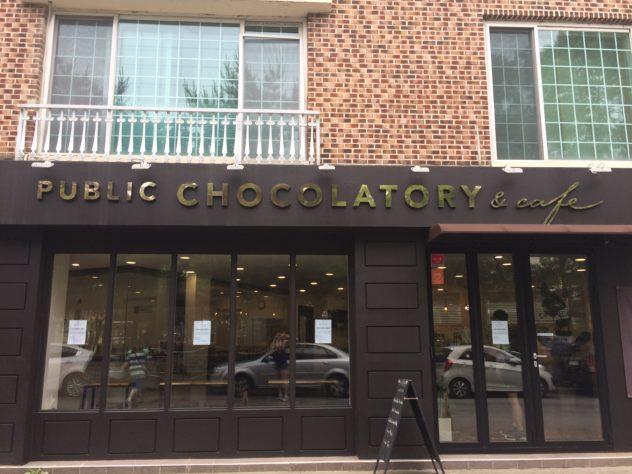
Note that this article was first published in 2017, and updated & heavily expanded in honor of the accompanying podcast episode on Korean chocolate culture.
If you found this interesting, please pin it!
What kinds of chocolate treats would you like to see coming into Korea?













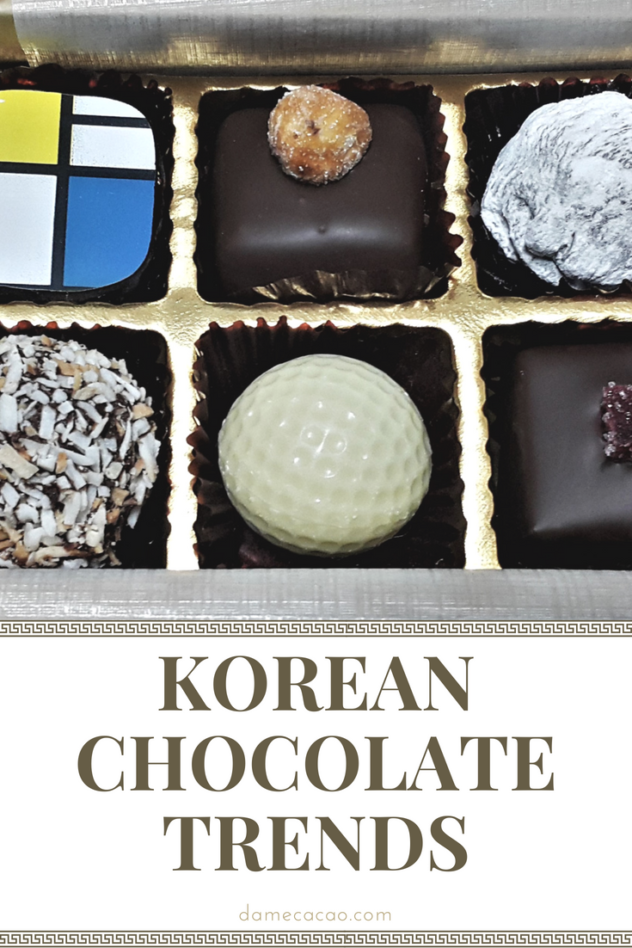

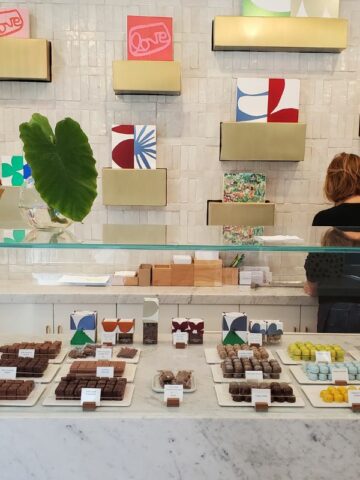


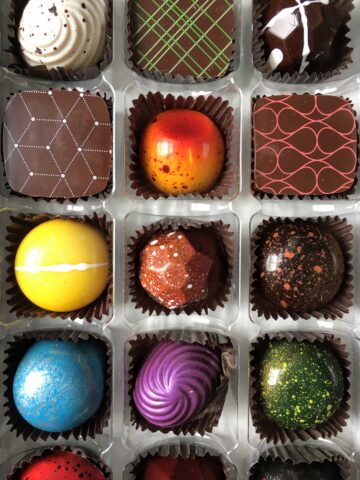
Ji
Hi Max, I m so glad I found your blog..!
Little update: all coco bruni chains are now closed, same for cacaoboom in Itaewon. I have been to Sayoo and like you, I was confused by their concept.
Have you tried « Fell a coffee/choco » chain?
Max
Thanks, Ji! There are lots of pictures from the last few days of people at Coco Bruni locations, so I'll hold off on removing them until an official announcement. And you're correct; CacaoBoom has moved their Itaewon location! I'll fix that now. I have heard of Fell A Coffee, but never got to try their chocolate, unfortunately. :/
ssoo
It was quite interesting. I learned about chocolate history in Korea, even I lived in. I read it with fun, and I'll try to get some sweety bonbons. Thanks 🙂
Max
Thank you, Ssoo! I'm glad I could teach you something about chocolate form your country. 🙂
Just Bornn Chocolates
Wow nice one.Informative blog on Korean chocolate culture.
Max
Thanks! I'm glad you enjoyed it.
CocoaSeed
I have heard so much about Korean Chocolate, but unfortunately, I have never been able to taste it. Reading this article, I have been convinced that Korean Chocolate is something that must be tried at least once in life!
Max
Some of it is quite good! Unfortunately,it's a very small amount, but it's increasing every day!